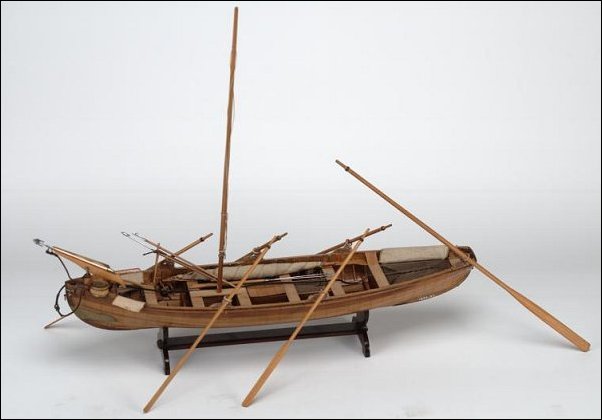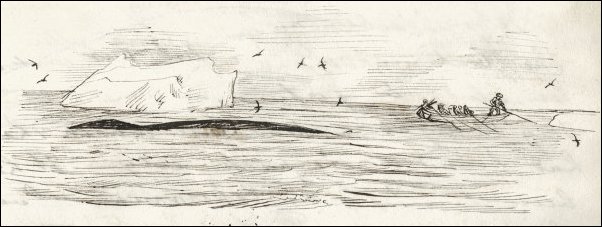According
to William Scoresby, a well constructed Greenland boat floated
lightly in the water, was capable of being rowed with great speed
and readily turned around, was large enough to carry 6 or 7 men
with 800 pounds weight of whale-lines and other equipment, and
yet was safe and bouyant even in a considerable sea.
Whale-boats
often suffered damage from whales and ice and were always carver-built,
with the planks fastened edge to edge, to allow easy repair.
Six
oared boats, designed to carry a steersman and six rowers, one
of whom was also harpooner, were 26-28 feet in length and about
6 feet in breadth. The bow and stern of Greenland boats were both
usually sharp but boats in the Peterhead fleet usually had a square
stern.
This
1:16 scale wooden model represents a whale catching boat from
around 1865. The boat is typical of the Peterhead type with a
square stern. The boat would have carried a crew of seven including
a harpooner and a steersman and 1 kilometre of whale-line, made
up of five lines of 219 metres each. The lines were carefully
coiled so that they would not snag.
As would be usual by that date, the boat is fitted with a harpoon
gun in the prow. The model harpoon can be seen projecting from
the gun. When a whale was sighted, two boats like this one were
lowered from the steam whaler to fire the harpoon into the whale’s
back. Possibly six other whale catching boats were then lowered
to assist the capture, using more harpoons. Once the whale was
exhausted, it was killed by lances and taken back to the whaler
for further processing.

©SCRAN/National
Museums Scotland
Model of whale catching boat

©Aberdeen
University
Drawing from a whaler's diary of a Peterhead whale boat approaching
a bowhead whale